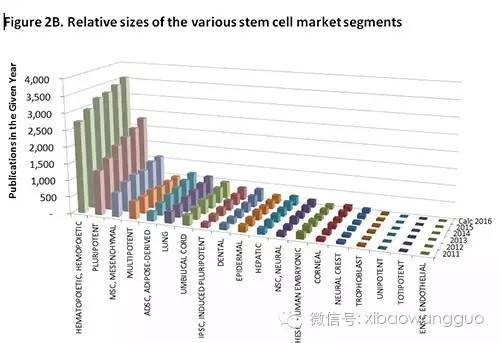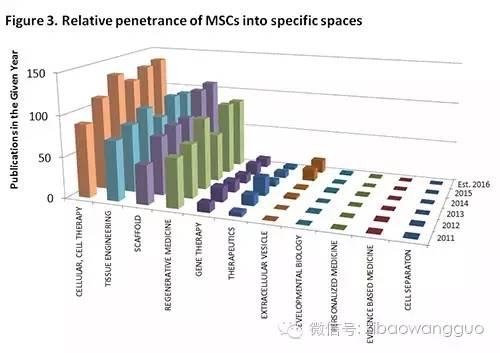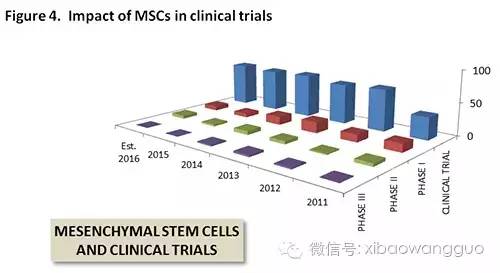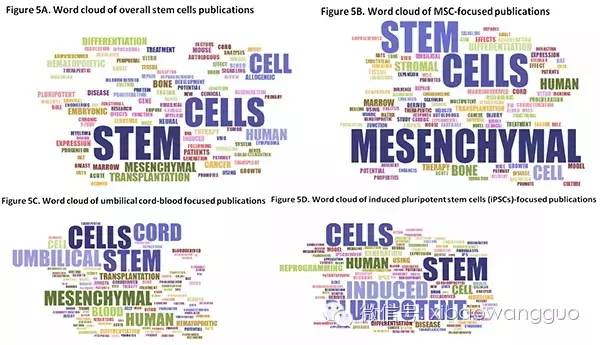
Stem cells have great potential for human health and disease treatment. Referring to the China Stem Cell Medical Industry Development Report, the global stem cell-related market in 2015 was US$63.5 billion, and it is expected to reach US$160 billion by 2021, with an average annual compound growth rate of 19.8%.
However, this market is also complicated. In addition to regulatory policies, it involves many different research directions and industrial chains. Recently, the GEN website published an article on the stem cell market landscape. Starting with statistical stem cell research articles, quantitative and qualitative analysis of the entire industry and branches was conducted to assess the development prospects of the stem cell industry.
Dr. Enal Razvi, a graduate of Rockefeller University and a professor of the 2011 Nobel Prize, Dr. Ralph Steinman, conducted a stem cell market analysis in collaboration with Dr. Gary M. Oosta, who graduated from the Massachusetts Institute of Technology with years of medical technology research experience and 77 patents. They selected the PubMed database and searched the literature with the term “stem cellsâ€. They found that when “2012-2016†was used as the time range, a total of 125,692 academic articles were searched.
— 1 —
Quantitative analysis of the stem cell market: rising at an annual rate of 5.39%
Taking time as the horizontal axis and plotting the number of articles published each year on the vertical axis, they found that the annual growth rate (CAGR) of research articles surrounding stem cells between 2012 and 2016 reached 5.39%. (Figure 1)

Subsequently, the researchers subdivided the searched academic articles according to the types of stem cells (19 branches), and counted the number of articles published under each branch from 2011 onwards, and compared the relative growth rates. (Figure 2A) In order to visualize the representation, the researchers presented the relative values ​​of the research articles in each subdivision in the form of a three-dimensional graph. It can be seen that the most popular stem cell research is hematopoietic stem cells, which has a history of more than 40 years. In addition, pluripotent stem cells and mesenchymal stem cells also occupy a large proportion. (Figure 2B)


— 2 —
Star in the family: mesenchymal stem cells
Mesenchymal stem cells (MSCs) have multiple differentiation, hematopoietic support, and promote stem cell implantation, immune regulation, and self-replication. They also have the ability to directionalally migrate to damaged tissues and regulate immune responses according to specific circumstances. Medicine and tumors, inflammation and other diseases have great potential for treatment. Dr. Razvi still classified the mesenchymal stem cell articles according to the research function through literature search, and found that MSCs are the most widely used in cell therapy, regenerative medicine, tissue engineering and scaffolds. (Figure 3) At the same time, the researchers counted the clinical research project of mesenchymal stem cells. (Figure 4)


— 3 —
Qualitative analysis of the stem cell market: more mature
In addition to the above quantitative analysis of the relative size, growth rate and other stem cell markets, the researchers also conducted a qualitative analysis of the stem cell field. They separately analyzed the above-mentioned literatures for "stem cells" and "mesenchymal stem cells" through a "word cloud" program. (Figure 5A, B, C, D)

The stem cell academic research investment has risen by an overall growth rate of over 5%, indicating that the field is relatively mature and free from the speculation. However, there are still many challenges to overcome from its true application in disease cell therapy and tissue engineering applications. Now, in addition to cell therapy, tissue organ transplantation repair, and gene therapy, research on stem cells is shifting toward drug development, toxicity assessment tools, and developmental biology models. This means that from the upstream stem cell storage, midstream stem cell drug development to downstream stem cell therapy, the industrial chain system surrounding stem cells has become more complete.
The biggest impact in the stem cell field is to advance basic research and advances in life sciences, which will drive innovation in drug development, medical tools, and detection technologies. In the next decade, we expect the stem cell sector to continue to rise steadily at a 5% growth rate.
Disclaimer: The article is compiled and collated from the GEN website. The original text refers to "A 10,000-Foot View of the Stem Cell Market Landscape". This article is taken from the Internet, and the copyright of the article belongs to the original author.
SARMs is a new performance-enhancing compound that is shaking up the fitness industry. They have the ability to promote muscle growth, fat loss, and even cardiovascular endurance. To maintain legitimacy, these new compounds, sold for "research purposes," are emerging as promising alternatives to anabolic Steroids. A lot of people are trying to promote dramatic changes in SARM's body structure.
As we age, our endurance, strength and skeletal muscle mass decline due to the gradual loss of type 2 muscle fibers. This severely limits our individual athletic performance. Skeletal muscle mass and muscle strength were significantly improved with SARM in this androgen deficient population.
Hormone receptor modulator. Basically, it's a fancy term for a drug that affects hormones in the body in a very specific way. It's very different from the way steroids work. Take testosterone, for example. Testosterone is considered the gold standard of anabolism and is used by millions of people around the world. While it's great at promoting muscle growth, it can also cause horrible side effects such as enlarged breasts and hair loss in women. This is because testosterone is converted into both estrogen and DHT in the body.
Let's take a look at the current SARM lineup on the market. I'll go through each one in detail and explain how they work.
sarms for sale,buy sarms online,sarms side effects,sarms supplement,sarms bodybuilding
Shaanxi YXchuang Biotechnology Co., Ltd , https://www.peptide-nootropic.com